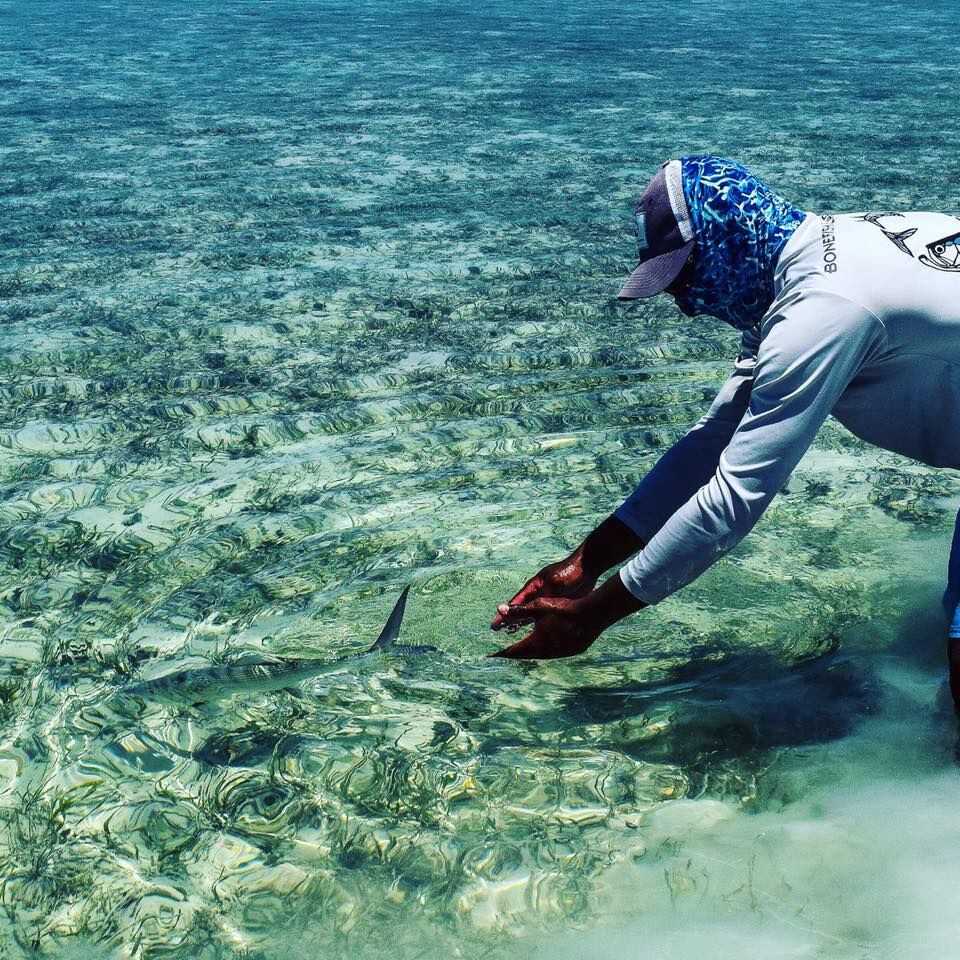There are two ways that fish populations in different locations can be connected – by migrations of adults and by the transport of fish larvae by ocean currents. Learning how, and to what extent, bonefish, tarpon, and permit populations are connected is important for conservation because this information allows us to design the most effective management plans.
On the local scale – say an island in the Bahamas, or the Florida Keys – bonefish in different locations are connected by spawning migrations. Tagging and tracking of bonefish in the Bahamas, Belize, and Florida Keys shows that for most of the year adult bonefish stick to a small area. In other words, if you fish a flat often, you are probably fishing to the same local population of bonefish. But during spawning season, these bonefish undergo long-distance migrations to spawning sites – we’ve tracked bonefish migrating 70 miles from their home flat to a spawning site, and then returning to their home flat. This means that during the spawning season, bonefish from a wide region can mix.
This leads us to the regional scale – say between Mexico, Belize, Cuba, Florida. Gathered in large groups, bonefish swim offshore at night to spawn. They spawn in the top 200 feet or so of water that is thousands of feet deep. They use a method called broadcast spawning – they eject eggs and sperm into the open water, where fertilization occurs. The fertilized eggs hatch in about 24 hours, and the tiny larvae live as plankton in the open ocean for between 41 and 71 days. During this oceanic phase, ocean currents can act to retain the larvae near their parents’ location, or the currents can transport the larvae long distances. So a larvae that is spawned in south Andros, the Bahamas, might end up becoming a juvenile in Andros, or it might end up on another island in the Bahamas or on the north coast of Cuba. The end result is that bonefish in separate locations are essentially part of the same regional population.
What does this mean for conservation? On the local scale, habitat conservation and protection must focus on adult home flats, spawning migration pathways, spawning sites, and juvenile habitats. On the regional scale, we have to make sure that bonefish populations are healthy in all locations, even if we only have one favorite fishing location. And that the local conservation measures, like habitat protection, are adequate in all locations to ensure that the local populations are healthy. In other words, every location where bonefish live is important to having a healthy regional population, and your local fishery depends on a healthy regional population as well as local conservation measures.




